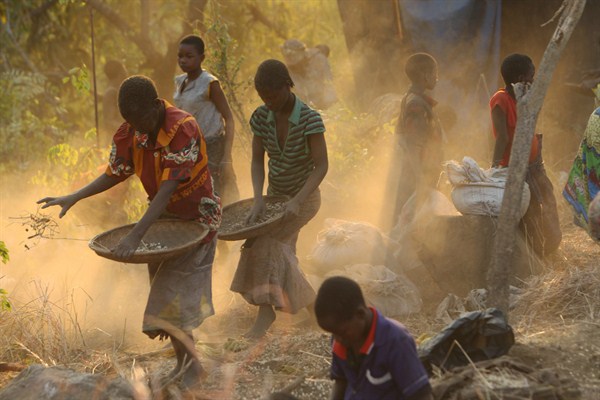Driving along central Malawi’s M5 lakeshore highway in mid-2016, a visitor could be forgiven for mistaking the surrounding countryside for desert. In what should have been an area lush from rains ending in April, the land of gently sloping hills, baobab trees and fiery sunsets was parched. Although the road meandered past some signs of greenery—mango trees, tobacco fields, irrigated sugar cane for export—the dust that stretched to the horizon did little to mask that Malawi, like much of eastern and southern Africa, is in crisis. Hit by the strongest El Nino in a generation, which disrupted rainfall patterns, ruined crops and unleashed drought conditions from Addis Ababa to Cape Town, the region now faces one of its most acute food shortages in memory. According to the United Nations’ World Food Program (WFP), 18 million people in seven countries will need emergency food support by the end of the year, as stocks from April’s notably poor harvest dwindle.
In Malawi, which faces a 790,000-ton deficit of maize, the staple crop, 6.5 million people will be in need of assistance, up from 2.8 million who required aid during a flood-ravaged 2015. Although food shortages in the country, one of Africa’s least developed, are not uncommon, emergency distribution usually begins in November, when Malawi’s most vulnerable households typically exhaust their stocks. This year, the WFP started distributing in July. By August, the organization had raised just $65 million of the $280 million necessary to fully meet the country’s humanitarian needs. “July and August is the time we should be buying and importing,” says Coco Ushiyama, the WFP’s country director, in an interview from the capital, Lilongwe. “But the donations are coming in so slowly. We feel as if our hands are tied.”
In the two months since, the organization has made considerable progress toward its goal, cutting its funding gap to $77 million, importing maize from Mexico and Zambia, and expanding distribution to 11 of Malawi's 28 districts. As the crisis continues to unfold, however, a long-held debate over one of Africa’s most critical public policy conundrums has again risen to the surface. As a continent home to half the world’s uncultivated arable land, where crop yields are between one-third and one-half of the global average, many believe that with the right mix of policies, inputs and investments, Africa could become a global breadbasket. First, though, its 54 countries of varying political systems, climate zones and soil fertilities must sustainably feed themselves—a task that is becoming increasingly difficult. By 2050, the U.N. expects Africa’s population to double to 2.4 billion, creating more mouths to feed and squeezing its smallholder farmers, who account for two-thirds of its citizens, into ever smaller, less productive plots.

